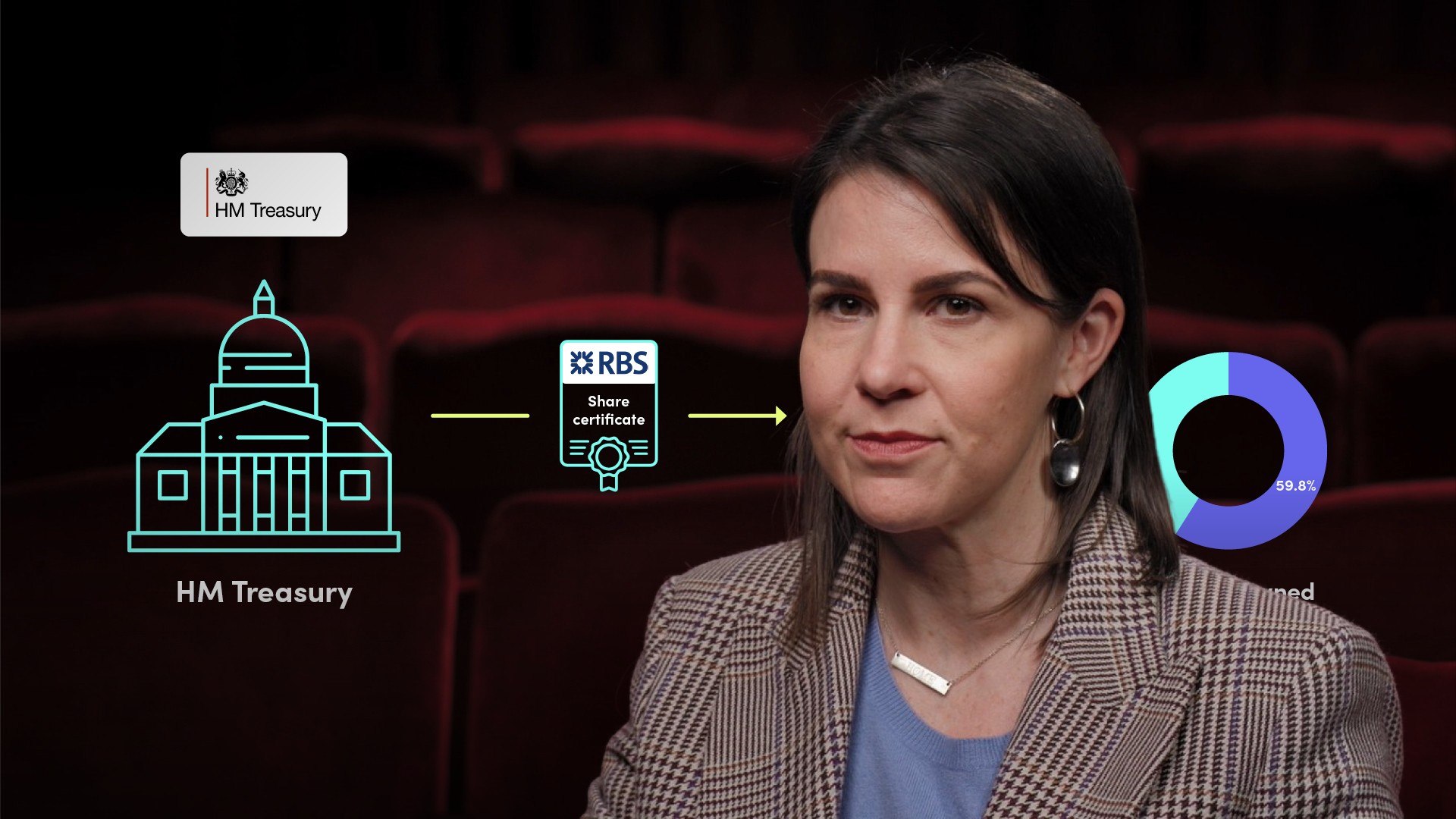
The Rise and Fall of RBS I

January Carmalt
20 years: Research & banking
In this video, January talks about how the seeds of unbridled ambition within RBS were sown as early as the 1980s with the-then CEO Sir George Mathewson, who had his sights set on the international expansion of RBS. She also talks about the NatWest acquisition which saw Fred Goodwin’s star rise even higher, priming him for the top role and transforming RBS into a multi-platform, global banking giant.
In this video, January talks about how the seeds of unbridled ambition within RBS were sown as early as the 1980s with the-then CEO Sir George Mathewson, who had his sights set on the international expansion of RBS. She also talks about the NatWest acquisition which saw Fred Goodwin’s star rise even higher, priming him for the top role and transforming RBS into a multi-platform, global banking giant.
Subscribe to watch
Access this and all of the content on our platform by signing up for a 7-day free trial.

The Rise and Fall of RBS I
7 mins 37 secs
Key learning objectives:
Identify the first step in RBS’ quest to transform into a global powerhouse
Outline the defining characteristics of RBS’ real transformation
Identify the issues regarding the CEOs strategy
Overview:
In 2008, RBS was the fifth most valuable bank in the world by market capitalisation. They found themselves in the position where each takeover justified the next, on account of the bank’s success at integrating businesses, streamlining operations, slashing overheads and boosting profitability. RBS seemed to be soaring to new heights with each takeover, but it was at the height of their success that analysts began to wonder whether RBS was flying too close to the sun.
Subscribe to watch
Access this and all of the content on our platform by signing up for a 7-day free trial.
How did RBS transform into a global banking giant?
On 6th of March 2000, RBS acquired National Westminster Bank, or NatWest, in a £21bn hostile takeover battle. This catapulted RBS onto the world stage of financial services, creating the 2nd largest bank in the UK and Europe and one of the largest banks in the world by market capitalisation. The merger tripled assets to over £320bn.
With NatWest, RBS inherited Ulster Bank in Ireland, private bank Coutts and investment bank Greenwich NatWest. This, coupled with Citizens Financial (which RBS had acquired in 1988) transformed RBS into a multi-platform, global banking giant.
What other acquisitions did RBS make, and what was the impact on the financials?
Emboldened by the merger with NatWest, a boundless bull market and unfettered by shareholder scrutiny, from 2000 to 2007, RBS made no less than a dozen acquisitions including, but not limited to First Active in Ireland, Charter One in the US, Commonwealth Bancorp, a minority stake in Bank of China, insurers Direct Line and Churchill and culminating in the ill-fated purchase of ABN AMRO in 2007.
The balance sheet swelled and from 2001 to 2008 total assets more than quadrupled to over £2trillion. From 2000 onward, the cost to income ratios fell materially from nearly 60% before CEO Fred Goodwin took control, to low forty percent by 2007.
How can we define RBS’ real transformation in the 2000-2007 period?
- Rising returns
- Increasing contribution from capital intense Global banking and markets
- Rising reliance on wholesale funding
- Persistently razor thin capital margins
From 2000 onward, RBS’ Tier 1 ratios hovered around 7%, and critically its CORE equity Tier 1 capital fell perilously low to 4%.
Were there any concerns regarding Fred Goodwin’s strategy?
From 2004, RBS received its first hint of shareholder pushback and discontent after agreeing to acquire Charter One Financial for $10.5bn. Merging Charter One with Citizens made RBS the 7th largest bank in the US. Arguably a sensible purchase building on RBS’s current platform. But then this was swiftly followed by splashing $1.6bn for a minority stake in Bank of China. A curious move with little perceived strategic value leading many analysts to question Fred Goodwin’s ambition and spending.
Subscribe to watch
Access this and all of the content on our platform by signing up for a 7-day free trial.

January Carmalt
There are no available Videos from "January Carmalt"


























